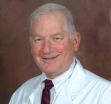New report underlines the threat to universal access to HIV prevention, treatment and care due to a slow-down in treatment scale-up and waning political will
2010-10-30
(Press-News.org) 28 October 2010 (Geneva, Switzerland) - A report issued today by the International AIDS Society, Universal Access: Right Here, Right Now documents the principal debates around universal access during the XVIII International AIDS Conference (AIDS 2010). The report also takes stock of progress to date and reveals the scale of the future challenge for HIV treatment and prevention at a time when new infections are outstripping those receiving treatment by five to two.
While significant progress has been made towards achieving universal access to HIV prevention, treatment and care, with a consistent increase in funding for the AIDS sector between 2001 and 2008 resulting in an estimated 5.2 million people receiving life-saving treatment by 2009, compared with only 500,000 in 2003, the IAS report reveals that the progress made in the sector is under threat; the current economic challenges combined with a waning political will and a flat-lining of resources are preventing the international community from making universal access a reality.
AIDS 2010 took place in Vienna in July 2010 at a critical moment in the push for expanded access to HIV services. Coinciding with the original 2010 deadline set by world leaders for achieving universal access to HIV prevention, treatment and care, the conference was an important platform for ensuring that the universal access pledge remains on the global health agenda.
Dialogue on universal access during AIDS 2010 focused on two core issues: securing the required resources from international donors and national governments; and making more effective and efficient use of available resources. A key theme among speakers was the challenging economic climate, with principal donors including PEPFAR, the World Bank, UNITAID, and the Global Fund experiencing funding reductions or failing to increase funding in line with needs. The World Bank estimated that the cumulative effect of a diminished scale-up effort over five years would be approximately ten million deaths and 14 million newly infected individuals.
The replenishment of the Global Fund to Fight AIDS, TB and Malaria was of major concern to conference delegates, as political leaders and activists alike advocated for the full replenishment of the Fund in the October 2010 Replenishment Meeting. Recognised by the international community as an effective mechanism through which to disburse large amounts of resources rapidly, the replenishment of the Global Fund is vital to reaching both the health related MDGs and universal access by 2015. These concerns have since been proved right, with donors pledging only US $11.7 billion earlier this month - less than the lowest of the three financing scenarios envisaged by the Global Fund. This amount will feasibly only allow for the continuation of funding of existing programmes, with new programmes being funded at significantly lower levels than in recent years.
The question of whether or not the international AIDS community should concentrate on doing more with fewer resources, or whether it should continue to advocate for increased resources to fight HIV and AIDS was heavily debated at the conference, in particular in light of the new WHO treatment guidelines as well as recent advances in prevention and treatment technologies. While the push for greater efficiencies is imperative, there was unquestionable consensus that efficiencies alone cannot make up for the large gap in needed resources.
"UNAIDS used AIDS 2010 to launch the new Treatment 2.0 platform which emphasizes the prevention of new HIV infections in a way which is smarter, faster and better. Treatment 2.0 is rooted in the notion that HIV infections can be cut by up to one-third if there is a significant change in how ARVs are provided. This means increased coverage, which in turn means more resources," said IAS President Elly Katabira. "Improved efficiencies are essential, however the scale of current unmet need and the fact that an additional 30-50% of HIV-positive people are eligible to start ART immediately under new WHO treatment guidelines, means universal access cannot and will not be achieved without a substantial increase in resources for AIDS. At this critical juncture in the international AIDS response, we should not be talking about doing more with less, but doing more with more."
The report confirms that the HIV response has rapidly scaled up in recent years as a result not only of increased bilateral and multilateral funding, but also due to the reduction in the cost of treatment and the application of innovative methods of prevention. Key stakeholders in the HIV response have also adapted to the effective utilization of additional health-related platforms such as maternal and child health and family planning. The progress and results that have been achieved, while significant, remain below the targets for universal access. Programme scale-up based on demonstrated good practice, programme efficiency gains, and the continued call for increased resources to avert millions of infections worldwide, are essential to ensure that Universal Access to the prevention, care and treatment of HIV and AIDS will be a reality by 2015.
INFORMATION:
About the IAS:
The International AIDS Society (IAS) is the world's leading independent association of HIV professionals, with over 14, 000 members from more than 190 countries working at all levels of the global response to AIDS. Our members include researchers from all disciplines, clinicians, public health and community practitioners on the frontlines of the epidemic, as well as policy and programme planners. The IAS is the custodian of the biennial International AIDS Conference and lead organizer of the IAS Conference on HIV Pathogenesis, Treatment and Prevention, which will be held in Rome, Italy in July 2011.
www.iasociety.org
www.ias2011.org
For general enquiries:
Email: info@iasociety.org
Tel: +41 22 710 0800
For more information about this release:
Sian Bowen (Geneva, Switzerland)
Senior Manager, Communications
Email: Sian.Bowen@iasociety.org
Tel: +41 22 710 0864
Lindsey Rodger (Geneva, Switzerland)
Communications Assistant
Email:Lindsey.Rodger@iasociety.org
Tel: +41 22 710 0822
ELSE PRESS RELEASES FROM THIS DATE:
2010-10-30
Scientists of the Max Delbrück Center for Molecular Medicine (MDC) Berlin-Buch and the Experimental and Clinical Research Center (ECRC) of MDC and Charité in Berlin-Buch have gained new insights into the development of epithelial cells and their molecular repertoire. Dr. Max Werth, Katharina Walentin and Professor Kai Schmidt-Ott have identified a transcription factor (grainyhead-like 2, Grhl2), which regulates the composition of the molecular "bridges" that link adjacent epithelial cells. The authors were able to demonstrate that Grhl2, via DNA-binding, directly regulates ...
2010-10-30
An international team of Mycologists and Ecologists studying Atlantic sea turtles at Cape Verde have discovered that the species is under threat from a fungal infection which targets eggs. The research, published in FEMS Microbiology Letters , reveals how the fungus Fusarium solani may have played a key role in the 30-year decline in turtle numbers.
"In the past 30 years we have witnessed an abrupt decline in the number of nesting beaches of sea turtles worldwide," said Drs. Javier Diéguez-Uribeondo and Adolfo Marco from Consejo Superior de Investigaciones Cientificas- ...
2010-10-30
The change in the ice mass covering Antarctica is a critical factor in global climate events. Scientists at the GFZ German Research Centre for Geosciences have now found that the year by year mass variations in the western Antarctic are mainly attributable to fluctuations in precipitation, which are controlled significantly by the climate phenomenon El Nino. They examined the GFZ data of the German-American satellite mission GRACE (Gravity Recovery and Climate Experiment). The investigation showed significant regional differences in the western coastal area of the South ...
2010-10-30
DETROIT – For pancreatic cancer patients unable to undergo surgery – the only known cure for this form of cancer – a highly targeted cancer radiation therapy may help slow cancer progression and lessen disease symptoms, according to researchers at Henry Ford Hospital in Detroit.
Called stereotactic body radiotherapy (SBRT), the study found it was able to delay pancreatic cancer progression locally, on average, by almost six months.
While, on average, the patients in the study lived about 10 months, one-third lived more than a year.
Without any treatment – surgery, ...
2010-10-30
New Rochelle, NY, October 29, 2010—Women experience and interact with their natural surroundings in ways that differ from men. The way in which those differences affect a woman's sense of self, body image, and drive to protect and preserve the environment are explored in a thought-provoking special issue of Ecopsychology, a peer-reviewed, online journal published by Mary Ann Liebert, Inc. (www.liebertpub.com). The entire issue is available free online at www.liebertpub.com/eco
Guest Editors Britain Scott, PhD, from the University of St. Thomas (St. Paul, MN) and Lisa ...
2010-10-30
A new study by researchers at the University of Leicester and University of Leeds has concluded that parents' efforts towards their child's educational achievement is crucial – playing a more significant role than that of the school or child.
This research by Professor Gianni De Fraja and Tania Oliveira, both in the Economics Department at the University of Leicester and Luisa Zanchi, at the Leeds University Business School, has been published in the latest issue of the MIT based Review of Economics and Statistics.
The researchers found that parents' effort is more ...
2010-10-30
AUGUSTA, Ga. – Saving a soldier's life takes precedence over treating traumatic urologic injuries on the battlefield, a Medical College of Georgia researcher says.
Injuries to the bladder, ureters, kidneys and external genitalia often require complex surgical treatment, said Dr. Arthur Smith, an MCG urologist. But during wartime, when those wounds are often combined with other life-threatening injuries, their treatment becomes secondary to lifesaving tactics.
Smith made his comments at a lecture, Revised Management Strategies for Urologic Injuries During Wartime, at ...
2010-10-30
CHAPEL HILL, N.C. – A new study by University of North Carolina at Chapel Hill and Norwegian researchers has found that women with anorexia nervosa are much more likely to have both unplanned pregnancies and induced abortions than women who don't have the serious eating disorder.
These results may be driven by a mistaken belief among women with anorexia that they can't get pregnant because they are either not having menstrual periods at all or are having irregular periods, said Cynthia M. Bulik, PhD, the study's lead author and director of the UNC Eating Disorders Program.
"Anorexia ...
2010-10-30
If there is one thing that recent advances in genomics have revealed, it is that our genes are interrelated, "chattering" to each other across separate chromosomes and vast stretches of DNA. According to researchers at The Wistar Institute, many of these complex associations may be explained in part by the three-dimensional structure of the entire genome. A given cell's DNA spends most of its active lifetime in a tangled clump of chromosomes, which positions groups of related genes near to each other and exposes them to the cell's gene-controlling machinery. This structure, ...
2010-10-30
Urgently-needed new treatment for a parasitic disease is being investigated in research led at the University of Strathclyde in Glasgow, Scotland.
Human African Trypanosomiasis, also known as sleeping sickness, affects between 50,000 and 70,000 people in Africa and South America. It is transmitted through the bite of the tsetse fly and attacks the nervous system and brain, leading to fever, headaches and disturbed sleep patterns.
Without treatment, the disease is fatal but a new drug to tackle it is being developed in a project led at Strathclyde, with partners from ...
LAST 30 PRESS RELEASES:
[Press-News.org] New report underlines the threat to universal access to HIV prevention, treatment and care due to a slow-down in treatment scale-up and waning political will



